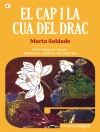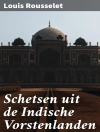In W. H. Davenport Adams’s travelogue ‘In the Far East, ‘ readers are invited on a richly detailed journey through the culturally vibrant and historically resonant landscapes of Asia. Adams employs a vivid narrative style, blending personal observations with broader social and political commentary, capturing the essence of diverse countries, including Japan and China, in the late 19th century. His eloquent prose is steeped in a sense of wonder and exploration, while also reflecting the imperial attitudes of his time, thus providing a critical lens through which contemporary readers can examine the complexities of colonial encounters. Adams, a British author and journalist, was deeply influenced by his own travels and fascination with Eastern cultures. His background in literature and his engagements with contemporary debates on imperialism and global trade equip him with a unique perspective that informs his writing. His experiences served not only as a backdrop to the narrative but also as a catalyst for his reflections on cultural exchange and misunderstanding, making his accounts both personal and poignant. ‘In the Far East’ is essential reading for anyone interested in the intersections of culture, history, and travel literature. Adams’s work not only offers insights into the East of his era but also challenges modern readers to consider the lasting impacts of colonialism and the nature of cultural identity. His compelling storytelling ensures that this book remains a captivating exploration of a world on the cusp of modernity.
Про автора
W. H. Davenport Adams, an English author and journalist of the 19th century, was known for his contributions across various genres, including history, travel, literature, and children’s books. Born William Henry Davenport Adams in 1828, he grew to prominence through his prolific writing which often reflected the Victorian era’s thirst for knowledge and exploration. One of his notable works, ‘In the Far East’ recounts his experiences and observations during his travels, shining a light on the cultural and geographical fascinations of Asia as seen through the eyes of a Westerner in that era. His literary style often melded informative prose with a narrative charm, capturing the interest of both casual readers and intellectuals of his time. As a scholar, he frequently compiled and edited books, which aimed to educate and inspire the youth of his day, staying true to the didactic spirit of the age. Adams’s works remain a testament to his dedication to literature and education. Unfortunately, his contributions have not garnered widespread contemporary recognition, and so, while detailed biographical information is scarce, his written legacy offers a window into his interests and the literary landscape of Victorian England.












